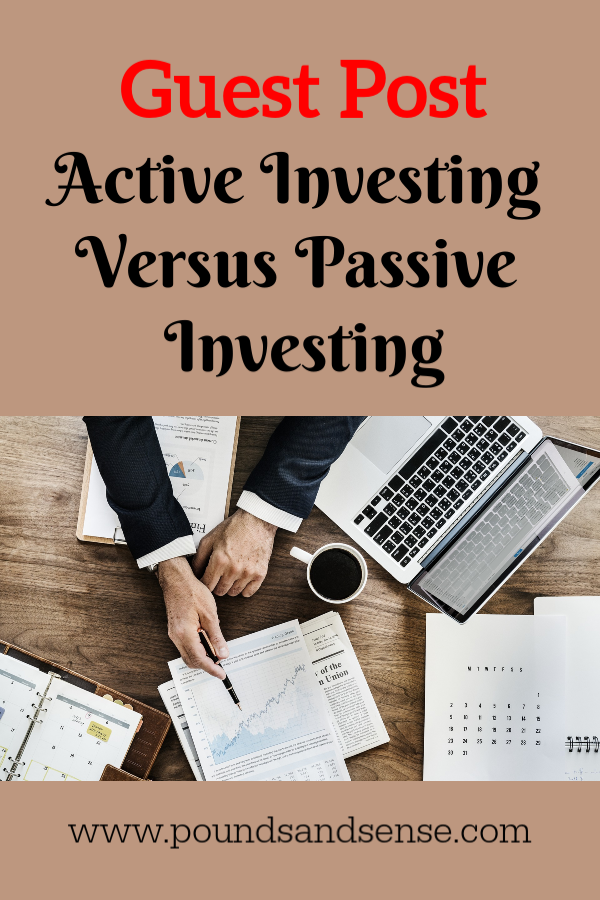The Hidden Risks of Safe Assets
Today I am pleased to bring you a guest post from Haydn Martin, a UK blogger whose website is called Perpetual Prudence.
Haydn explores ideas relating to retail investing and other personal finance topics on his way to finding the solution to Lifetime Investing…
In his guest post today he discusses the risks of investing in ‘safe’ assets.
Over to Haydn, then…
Risk might be the most important consideration when making investment decisions (like what to invest your ISA allowance in). Get it wrong and you could be retiring on a pittance, running out of money during retirement, or even worse – asking friends/family for handouts. Risk must be taken seriously and properly dealt with, especially when you’re living off your investment portfolio.
It seems strange, then, that risk is so poorly understood by so many.
One aspect of risk that is particularly neglected is the chance of a truly disastrous event crushing the value of the asset in question. The chance of these catastrophic events is ‘unthinkable’ and so not really taken into account by people when making investment decisions.
This is the wrong approach. In this piece, I will be talking about some of the hidden risks of the ‘safest’ asset classes and their implications for the investor.
Cash
What could go wrong with pilling up cold, hard cash under your mattress? This, surely, I hear you claim, entails no risks at all?
As you might have guessed, not quite. First, there are the practical considerations. If you actually store large amounts of cash somewhere in your house, that cash will promptly disappear if you get burgled, if your house burns down, or if your partner changes their mind about this whole marriage thing and does a runner (with the money). If at some other secure location, it can always be pinched. Cash held at a bank is dependent on the fortunes of said bank. As 2008 showed, this might not be the safest place in the world. The government will cover you up to £85,000, sure, but for those of you lucky enough to have more than this, you’re relying on the prudence of bankers.
Aside from the physical, one must also consider the monetary. Inflation, that cruel mistress, is the biggest threat to holders of pound sterling. It may be practically non-existent these days, but casting your mind back to the 70s will remind you of the real damage inflation can inflict on your purchasing power. If inflation is higher than the rate of interest you earn on your cash (that pile under the mattress is earning 0%) then you’re losing money in real terms. You’re actually getting poorer without realising it.
Government Bonds
Taking this cash and dumping it into government bonds may seem like a sensible thing to do, then. The government is probably less likely to fail than banks. These bonds earn some kind of interest to help combat inflation, too. Happy days.
Unfortunately, most of these rates of interest are dependent on the whims of the Governor of the Bank of England, not directly linked to interest rates. If the govna’ wants to maintain low interest rates to stimulate the economy after, say, a global pandemic has put a halt to business activity, they may maintain low interest rates, even with substantial inflation. This means that your bonds will be earning a negative real return. What’s also nasty about these bonds is the fact that their value fluctuates with inflation and interest rates. This means that you don’t actually receive the yield to maturity unless you hold the bond…to maturity. Otherwise, your yield may be substantially lower.
The government acknowledges this problem with bonds and issues index-linked versions to counteract this inflation risk. These bonds return some percentage above inflation, supposedly ensuring that you maintain your purchasing power (and then some). This, however, relies on the fact that the government calculates the rate of inflation correctly. How confident are you in the competence of the government? There is also the chance that the government defaults on their outstanding debt. This is unlikely under a fiat system (because they can always just print more money), but it remains a risk nonetheless. Reckless monetary policy can lead to veeeery high inflation, which is difficult to stop (just look at Argentina for a contemporary example). In this instance, your bonds would be worth precisely 0.
Shares
It would seem then, that relying entirely on the government may not be the best idea. What about companies?
The apparently safest form of investing in shares is investing in whole markets (or parts of markets) using index funds or ETFs. The highest level of diversification one can get is by investing in every market, using a global ETF/index fund. One of the main risks here is fake diversification. A lot of these global trackers should actually be called ‘US & Friends’. For example, if we look at the Vanguard FTSE Global All Cap Index Fund, we see that the US makes up nearly 60% of the fund. If the US performs badly, these trackers will too. There is also the chance that the company doing the tracking goes bust, meaning you will lose some of your investment. This is a pretty unlikely scenario, but it’s a possibility nonetheless.
An alternative approach is to keep your hard-earned money inside the UK, by investing in a basket of British companies. This leaves you rather exposed to the fortunes of the UK. If we prosper in the next 20-50 years, it will probably be a good move. If not, UK companies might not do so well. You are already likely to be heavily exposed to the UK via your job or some other way (like owning a house here), so it may be a good idea to diversify internationally a bit.
Many assets have this problem, come to think of it. If you plan on moving to the French Riviera in ten years’ time, you are going to want some exposure to French assets before you move. Let’s say France does really well in this time period but the UK does not. France is now more expensive, which is fine for French people because they have been getting richer, too. It’s not so fine for you, for whom France is getting more and more expensive. There is also the exchange rate risk to consider. You don’t want to convert your fortune into Euro only to find that it’s not worth all that much.
Just a closing remark on shares. It’s not clear that they will rise over and above inflation, even over long periods of time. The market is a complex system. The 7% return that everyone seems to be claiming the market naturally drifts towards is not guaranteed in practice.
Asset Management
What about just letting someone do your investing for you? Professionals with years of experience and good track records? That’s safe, right?
Empirically speaking, not really. Active managers don’t seem to be able to consistently outperform benchmarks. Those who do outperform appear to have poor subsequent performance (regression to the mean). All-star managers might have gotten lucky. Or maybe they had a winning formula but don’t anymore. Continuing to outperform is far from guaranteed.
When you use these managers, you are putting your fortune into their hands. It’s really hard to judge if these are competent hands or not. These funds can dazzle you with past performance and a good sales pitch, but that is not a good indicator of strong future performance. Take the recent Archegos Capital Management blow-up as a warning (it was the largest trading loss in history). You just never really know what these managers are doing and what risks they’re taking.
Other Assets
Seeing these risks, some prefer to shun the financial world in its entirety and invest in real stuff. Stuff they can see and touch that has a good track record of maintaining value. Things that have historically been valued highly – watches, cars, wine, oil, gold, silver, etc. – could be a good bet. The problem here is that the value of these items is very much dependent on tastes at the time you come to sell. The green initiative could accelerate, crushing the value of cars and oil, for example. Or the demand for watches may just simply die off for no particular reason. I see this as unlikely – things that have historically been highly valued don’t tend to lose their allure overnight without some kind of devaluing mechanism – but it’s possible all the same. The point is, these things are valued pretty much out of thin air.
Some assets are not valued out of thin air. Those that generate cash-flow can have their values reasonably estimated. A small business, for example. Or a property that you rent out. The risks here are specific to each individual case.
Summing Up
Everyone is an investor. You can’t escape it. Everything that can be valued fluctuates in real value. Every day you are making investment decisions, so you might as well know what you’re getting yourself into (or make sure your financial adviser does!).
A big part of this awareness is knowing about the risks of investments, especially the disastrous, not-often-mentioned risks discussed in this post. Nothing is risk-free. Everything can go to 0 and you can lose all your money as a result, making for a pretty grim retirement. It’s just something you have to live with. You have to be a bit paranoid when composing your portfolio or you could get burnt, and burnt badly.
Of course, risk should not be the only factor when making investment decisions. Your specific circumstances (your goals, your age, your income, etc.) must also be taken into account. But risk should be, in my view, the primary consideration. To thrive, first you must survive.
Thank you to Haydn for an interesting and thought-provoking article. Please do check out his excellent blog at Perpetual Prudence as well.
I do very much agree with Haydn that every investment (or savings option) carries some risk. It is therefore essential to be aware of the downside/worst-case-scenario with any investment, while setting this against the potential rewards. Taking excessive risks is clearly to be avoided, but being too risk-averse – and therefore missing out on profitable investment opportunities – can be counter-productive as well. That applies especially to younger people, who may have 30 or 40 years before they retire.
It is also, in my view, crucial to avoid the mistake of putting all your eggs in one investment basket. As regular readers will know, I am a big fan of diversifying your portfolio as widely as possible – across different investment types, asset classes, platforms and risk levels. That way, if one or two investments do go south, hopefully they will be more than compensated by others that succeed.
It is also important to remember that investing is a long-term game. You should generally have at least a five-year time-horizon, to allow for the inevitable ups and downs in markets to even out.
As ever, if you have any comments or questions on this post – for me or for Haydn – please do post them below.
Disclaimer: Everybody’s needs and circumstances are different, and nothing in this post should therefore be construed as personal financial advice. Everyone should perform their own ‘due diligence’ before investing and seek advice from a qualified financial adviser if in any doubt how best to proceed. All investment carries a risk of loss.





















